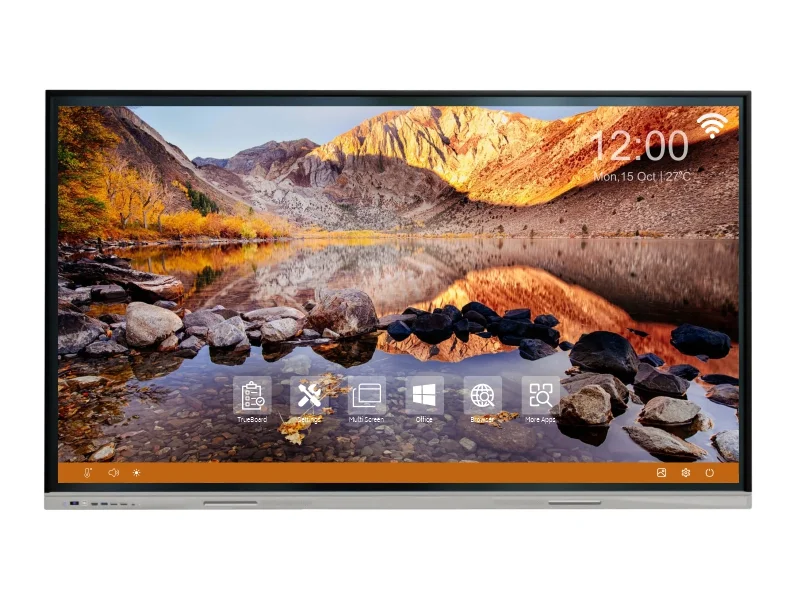Wall-Mounted vs. Portable Touch Displays: Which One Suits Your Space Best?
Choosing the right touch display can feel like a lot, especially when you’re trying to strike a balance between function, space, and practicality. If you’re weighing the options between a wall-mounted touch display and a portable touch display, you’re not alone. Many users face this same decision, wondering what will actually work better for their setup, be it a classroom, office, retail space, or public area.
Let’s break it down in simple terms.
What’s the Real Difference?
A wall-mounted touch display is fixed on the wall, much like a flat-screen TV. It’s great for places where you want a clean setup that doesn’t move around. On the other hand, a portable touch display comes with a stand or wheels, allowing you to move it from room to room.
When Wall-Mounted Displays Make More Sense
Wall-mounted displays are ideal for permanent setups. Here’s why you might prefer one:
- Space Saver: Mounted screens stay off the floor, freeing up valuable room, which is especially important in tighter spaces.
- Tidy Look: Wires are easier to conceal, and the screen becomes part of the room’s layout.
- Always Ready: There’s no setup time involved once installed. You walk in, and it’s good to go.
These are common in meeting rooms, digital signage setups, and classrooms where the display is a fixed part of the environment.
Why Portable Touch Displays Work for Flexible Needs
Portable touch displays are built for mobility. If you’re someone who needs flexibility, they’re worth considering.
- Move It Anywhere: Roll it into a meeting room today and into a training session tomorrow.
- Plug & Play: No need for wall installation. Just connect to a power source, and you’re ready.
- Great for Multi-Use Spaces: Schools, co-working spaces, and pop-up events love this kind of flexibility.
You get the freedom to adapt to changing needs without any fuss.
What to Consider Before Deciding
Ask yourself:
- How often will I need to move it?
- Do I have the wall space for a fixed unit?
- Is the setup for public use or a private workspace?
- What’s my budget for installation and support accessories?
Keep in mind that wall-mounted displays might need a bit more upfront setup, while portable ones might require stronger support structures to stay steady when in use. Furthermore, consider the long-term maintenance. Portable units may need more care due to movement, while wall-mounted displays often stay in better condition over time with less handling. Wall-mounted displays, being stationary, usually stay in better condition over time and are less prone to accidental damage.
Additionally, think about accessibility—portable displays may be easier to adjust for height or angle, which can be helpful in collaborative or inclusive environments.
So, Which One Is Right for You?
If your space is permanent and you prefer a neat setup, go for a wall-mounted touch display. If you value flexibility and plan to use the display in different rooms or locations, a portable touch display could be the smarter pick.
Choosing between a wall-mounted touch display and a portable one comes down to how you use your space. Define your needs, and the right choice will become clear.
To explore advanced touch displays in Delhi, check out Purplewave India’s touch display lineup.



